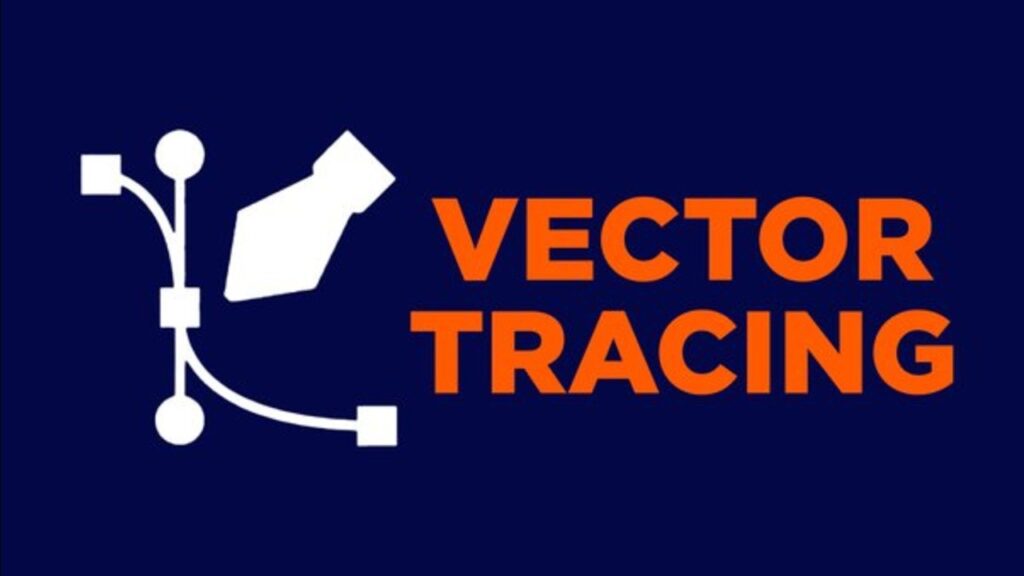Vector Tracing: A Comprehensive Guide for Precision in Digital Design
Vector tracing is an essential technique in digital design that allows you to convert raster images into scalable vector graphics. Whether you’re a professional designer or a hobbyist, understanding vector tracing can significantly enhance the quality of your designs. This technique ensures that your graphics retain their clarity and precision, no matter how much they are resized. In this article, we will delve into the basics of vector tracing, its importance in design, the tools you can use, and tips for achieving the best results.
What is Vector Tracing?
Understanding the Basics of Vector Tracing
It is the process of converting a raster image (made up of pixels) into a vector image (made up of paths). Raster images, like photographs or digital artwork, are composed of tiny squares of color known as pixels. When you zoom in on a raster image, you’ll notice that it becomes pixelated and loses quality. On the other hand, vector images are created using mathematical equations that define shapes and lines. This allows vector graphics to be scaled indefinitely without losing quality.
The Importance of Vector Tracing in Design
It is crucial for creating graphics that need to be used in various sizes, such as logos, icons, and illustrations. A well-traced vector image maintains sharpness and detail regardless of its size, making it ideal for everything from business cards to billboards. Additionally, vector files are typically smaller in size compared to raster files, making them easier to share and load quickly on digital platforms.
The Process of Vector Tracing
Manual vs. Automatic Vector Tracing
There are two primary methods of it: manual and automatic. Manual vector tracing involves using design software to trace over the original image by hand, creating paths that replicate the image’s shapes and lines. This method offers the highest level of precision and control, making it ideal for complex designs that require intricate details.
Automatic vector tracing, on the other hand, uses software algorithms to automatically convert raster images into vector graphics. This method is faster and more convenient, especially for simple designs. However, the results may not be as precise as manual tracing, and additional adjustments may be necessary.
Step-by-Step Guide to Manual Vector Tracing
- Choose the Right Software: Start by selecting a vector design software that supports it, such as Adobe Illustrator, CorelDRAW, or Inkscape.
- Import the Raster Image: Open your chosen software and import the raster image you want to trace.
- Create a New Layer: To keep your tracing organized, create a new layer for the vector paths you’ll be drawing.
- Use the Pen Tool: Select the Pen Tool (or equivalent tool in your software) and begin tracing over the image by creating paths along the edges of the shapes. Focus on accuracy and try to capture all the details.
- Adjust the Paths: After tracing, use the software’s tools to fine-tune the paths, adjusting anchor points and curves as needed.
- Add Colors and Effects: Once the tracing is complete, you can add colors, gradients, and other effects to enhance your vector image.

Tools for Vector Tracing
Popular Software for Vector Tracing
- Adobe Illustrator: Widely regarded as the industry standard for it design, Adobe Illustrator offers powerful tools for both manual and automatic vector tracing. The software’s “Image Trace” feature allows you to convert raster images into vectors with a high degree of control over the output.
- CorelDRAW: CorelDRAW is another popular choice for it design, offering robust tools that are particularly user-friendly. The software’s “PowerTRACE” feature provides excellent results with customizable settings.
- Inkscape: For those looking for a free and open-source option, Inkscape is a great choice. It offers a variety of vector tracing tools, including the “Trace Bitmap” function, which allows for automatic conversion of raster images to vector.
Choosing the Right Tool for Your Needs
The best tool for it depends on your specific needs and level of expertise. Adobe Illustrator is ideal for professionals who require advanced features and high precision, while Inkscape is a solid choice for beginners or those on a budget. CorelDRAW offers a balance between ease of use and functionality, making it suitable for both amateurs and professionals.
Tips for Effective Vector Tracing
Start with a High-Quality Image
The quality of the original raster image plays a significant role in the outcome of your it. Start with the highest resolution image possible, as this will make it easier to capture fine details and achieve a cleaner vector result.
Use Fewer Anchor Points
When manually tracing, try to use the fewest anchor points necessary to achieve smooth curves and lines. Too many anchor points can make the paths look jagged and difficult to edit. Aim for simplicity while maintaining accuracy.
Zoom In for Precision
Zooming in on the image while tracing allows you to see the details more clearly and place your paths more accurately. This is especially important for capturing small or intricate elements of the design.
Experiment with Different Settings
If you’re using automatic vector tracing, experiment with different settings to find the best balance between accuracy and simplicity. Most software allows you to adjust parameters like threshold, path fitting, and corner detection, which can greatly impact the final result.
Conclusion: Mastering Vector Tracing for High-Quality Design
It is a powerful technique that can elevate the quality of your digital designs. By converting raster images into scalable vectors, you ensure that your graphics remain sharp and clear, no matter the size. Whether you choose to trace manually or use automatic tools, understanding the process and applying best practices will help you achieve the best possible results. With the right tools and techniques, It can become an invaluable part of your design workflow, enabling you to create precise, professional graphics that stand the test of time.




